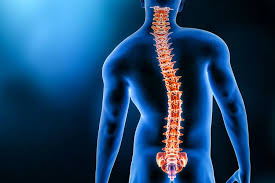The following factors will be considered by the doctor when deciding on treatment options:
- Sex: females are more likely than males to have scoliosis that gradually gets worse.
- Severity of the curve: the larger the curve, the greater the risk of it worsening over time. S-shaped curves, also called “double curves,” tend to get worse over time. C-shaped curves are less likely to worsen.
- Curve Position: if a curve is located in the center part of the spine, it is more likely to get worse compared with curves in the lower or upper section.
- Bone maturity: the risk of the curve worsening is much lower if the patient’s bones have stopped growing. Braces are more effective while bones are still growing.
Medical management: Most people with scoliosis have mild curves and probably won't need treatment with a brace or surgery. Children who have mild scoliosis may need regular checkups to see if there have been changes in the curvature of their spines as they grow.
Braces- When childens' bones are still growing and he or she has moderate scoliosis, the doctor may recommend a brace. Wearing a brace won't cure scoliosis or reverse the curve, but it usually prevents further progression of the curve.
The most common type of brace is made of plastic and is contoured to conform to the body. This brace is almost invisible under the clothes, as it fits under the arms and around the rib cage, lower back and hips. Milwaukee brace.
Surgical treatment: A specialist may suggest scoliosis surgery to reduce the severity of the spinal curve and to prevent it from getting worse.
The most common type of scoliosis surgery is spinal fusion.
In spinal fusion two or more of the vertebrae are fused together, so they can't move independently.
If the scoliosis is progressing rapidly at a young age, surgeons can install a rod that can adjust in length as the child grows.
Complications of spinal surgery may include bleeding, infection, pain or nerve damage. Rarely, the bone fails to heal and another surgery may be needed.
Physical therapy management: The aims of physical therapy are:
- Autocorrection 3D
- Coordination
- Equilibrium
- Ergonomical corrections
- Side-shift
- Muscular endurance/ strength
- Neuromotor control of the spine
- Increase of ROM
- Respiratory capacity/ education
- stabilization
Exercises: The Schroth Method is a nonsurgical option for scoliosis treatment.It uses exercises customized for each patient to return the curved spine to a more natural position. The goal of Schroth exercises is to de-rotate, elongate and stabilize the spine in a three-dimensional plane.
There are also other exercises that have been found effective eg Scientific Exercises Approach to Scoliosis (SEAS) exercises.
The SEAS exercises are, according to the Italian Scientific Spine Institute (ISICO), based on a specific form of Active Self-correction (ASC), that is taught individually to each single patient. This is to achieve the maximum possible correction. ASC is then associated with stabilizing exercises that include neuromotor control, proprioceptive training and balance.
Klapp Exercises are another exercise program. It was a nonsurgical method established with the aim of correcting the spinal curvature by stretching and strengthening the back muscles.
Breathing Exercises combined with the thoracic active mobilizations are another important aspect of physiotherapy.


